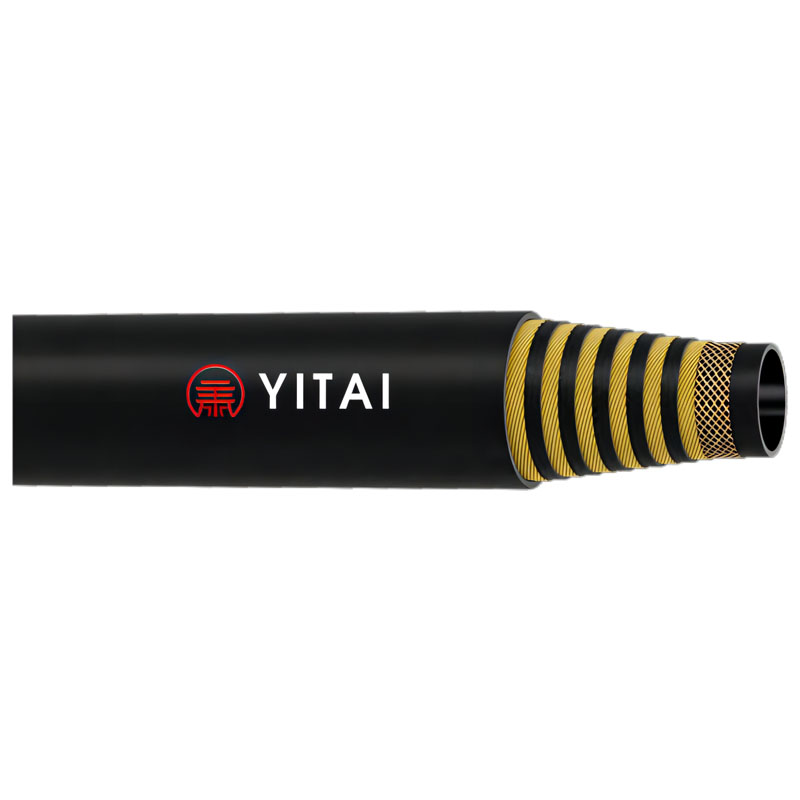- English
- Español
- Português
- русский
- Français
- 日本語
- Deutsch
- tiếng Việt
- Italiano
- Nederlands
- ภาษาไทย
- Polski
- 한국어
- Svenska
- magyar
- Malay
- বাংলা ভাষার
- Dansk
- Suomi
- हिन्दी
- Pilipino
- Türkçe
- Gaeilge
- العربية
- Indonesia
- Norsk
- تمل
- český
- ελληνικά
- український
- Javanese
- فارسی
- தமிழ்
- తెలుగు
- नेपाली
- Burmese
- български
- ລາວ
- Latine
- Қазақша
- Euskal
- Azərbaycan
- Slovenský jazyk
- Македонски
- Lietuvos
- Eesti Keel
- Română
- Slovenski
- मराठी
- Srpski језик
Knowledge about Hydraulic Hoses
2025-09-26
1. What is a hydraulic hose?
Hydraulic hoses are flexible pipes used to transport hydraulic media within transmission systems. They are made of varying materials depending on the application, with rubber being a primary material. Because hydraulic hoses are used in hydraulic transmission systems and typically need to withstand high pressures, industries like the coal industry often refer to them as "high-pressure hoses." While this term is incomplete, it does reflect the importance of high-pressure performance in these industries. High-pressure hydraulic hoses typically operate in harsh environments and have stringent performance requirements, such as maximum pressure, bend radius, and service life. These hoses place high demands on raw materials, production processes, and equipment, making them high-end rubber hoses. High-pressure hydraulic hoses consist of an inner rubber layer, a middle rubber layer, a carcass layer, and an outer rubber layer. The inner rubber layer is directly exposed to wear and corrosion from the media being transported. Manufacturers often use different rubber compound formulations based on the specific medium being transported to ensure the hose's lifespan. The outer rubber layer protects the hydraulic hose from damage and corrosion from the external environment, while also preventing the middle and inner rubber layers from polluting the environment. The carcass layer is the pressure-bearing layer of the hose, enhancing its strength and pressure resistance. The structure and strength of the carcass layer determine the pressure the hose can withstand.
Hydraulic hoses are widely used in mining, military, engineering machinery, metallurgy, petroleum, chemical, aviation, and marine applications. Hydraulic hoses can be categorized into braided and spiral hoses based on their carcass structure. Based on the carcass material, they can be classified into steel wire and cotton wire hoses.

2. What factors should be considered when selecting a hydraulic hose?
Specifications
Hydraulic systems transfer energy by transmitting fluids at varying pressures and flow rates. To minimize pressure loss and prevent system damage caused by excessive heat generation, the hose and connector dimensions must be appropriately sized. (If the required hose specifications are not yet determined, select the appropriate hose specifications according to the hose flow selection table.)
Pressure
Hose and fitting selection must ensure that the maximum working pressure of the hose assembly is equal to or greater than the maximum working pressure of the hydraulic system, and the system's pulse working pressure or peak pressure must be less than the hose's maximum working pressure.
The pressure range of hose fittings is often overlooked by designers and hose assembly manufacturers. In fact, the pressure range of a hose assembly is determined by the lowest working pressure of the hose assembly components, and many fittings have a pressure range much lower than that of the pipe.
Temperature
When selecting a hose, carefully consider the medium being conveyed within the hose and the ambient temperature outside the hose. Generally speaking, operating conditions involving high temperature and high pressure will reduce the hose's service life. For high-temperature conditions, select a high-temperature-resistant hose with a hose designation ending in "6." Low temperatures can reduce the flexibility of rubber products. Generally, the minimum temperature of a hose assembly refers to the lowest temperature at which the hose's outer surface can withstand cracking without compromising its bending performance.
3. Common Hydraulic Hose Failures
1. Cracks on the hose surface: This is primarily caused by bending the hose in cold conditions. If you notice cracks on the hose's exterior, check to see if the inner rubber also shows cracks to determine whether the hose needs immediate replacement. Avoid moving or bending hydraulic hoses in cold environments; perform this operation indoors if necessary. If the hose is required to operate in cold environments for extended periods, use cold-resistant hoses.
2. Bubbles on the hose's outer surface: This may be due to substandard hose quality or improper handling.
3. Excessive oil leakage despite no damage: This is caused by corrosion and scratching of the inner rubber layer when the hose passes through high-pressure fluid, leading to extensive leakage of the steel wire layer.
4. Severe deterioration of the hose's outer rubber layer, with minor surface cracking: This is a sign of natural hose aging. As the outer rubber layer oxidizes, it forms a layer of ozone, which thickens over time. The hose should be replaced at this point.
5. Failure of the inner rubber layer: The inner rubber layer of a hydraulic hose is a critical component, directly contacting the hydraulic fluid. Failure of the inner rubber layer can lead to decreased hose performance, excessive oil leakage, and bulging. Causes of inner rubber layer failure include poor manufacturing quality, improper selection, incorrect installation, and improper use.
6. Mechanical Failure of the Reinforcement Layer: The reinforcement layer is a critical structural layer of the hydraulic hose, protecting its integrity under high pressure. Mechanical failure of the reinforcement layer can lead to decreased pressure resistance and shortened service life. Causes of mechanical failure of the reinforcement layer include poor production quality, improper material selection, and harsh operating environments.
7. Mechanical Failure at the Fracture: The fracture is the most vulnerable part of the hydraulic hose. Mechanical failure at the fracture can cause the hose to break and leak. Causes of mechanical failure at the fracture include poor production quality, improper material selection, and harsh operating environments.




